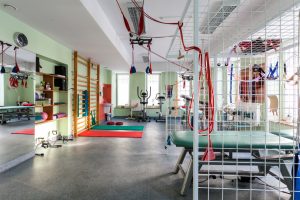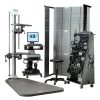
10 Low-cost Upgrades for Your Clinic
Practice ManagementI’ve seen the atmosphere and environment make a big difference in some clinics. These intangible factors influence your clinic’s success, and they are in your control! Let’s run through a few examples and how to improve them for your facility.
For the last six years, I have traveled to countless rehabilitation facilities all over the world. Much of my work takes me into hospitals, outpatient clinics, rehab hospitals, universities, and sports venues to educate clinicians. I teach them proper clinical use of physical and occupational therapy technology, but I also learn from them.
Every time I visit a clinic, I learn more about how clinicians can provide the best care for their patients. One thing that surprised me is how the clinic atmosphere impacts patient retention and outcomes. You might not think that an intangible factor, something outside the actual treatment, can affect patients very much. But I’ve seen the atmosphere and environment make a big difference in some clinics.
First impressions are everything
What’s the first thing someone notices when they walk in your clinic? When people enter a new environment, they’re usually extra sensitive to their surroundings. A faint musty smell, slightly dim lighting, or a cluttered corner can immediately turn people off. And it’s not just your patients – clinic atmosphere has consequences for employee retention as well. You want your clinic to make a great first impression on everyone who enters it. Not only will it help improve patient comfort and satisfaction, it may also influence them to return to your clinic or recommend it to others.
But it works both ways. If your clinic has an uninviting atmosphere, that may influence patients to choose another clinic for the rest of their treatment. While your clinic budget may not allow for a complete renovation, you still have low-cost options for improvement. A few things to note when assessing your clinic’s atmosphere:
- Space
- Temperature
- Humidity
- Lighting
- Flooring
- Privacy
- Clinic technology
- Restrooms and locker rooms
- Odor
- Decor
These factors influence your clinic’s success, and they are in your control! Let’s run through a few examples and how to improve them for your facility.
Open space
How much open floor space do you have in your clinic? Do you have ample room for your staff and patients to perform dynamic activities without inhibiting other patients or equipment? What about walking paths between treatment stations?Having open space and clear walking paths inside the clinic can greatly improve the feel of the room. The right layout can make the space appear larger and more inviting.Your clinic should provide the appropriate space according to your patient population.
For example, a hand therapy clinic may not require as much space as a sports medicine facility. Try and not fill up open spaces with large equipment that only provides one type of exercise. Opt instead for multi-functional technology, like the PrimusRS, which facilitates evaluation, treatment, and testing.
Temperature
A comfortable room temperature has a big impact on making people feel at ease in your clinic. The ideal temperature of a work facility should be 68-76 degrees Fahrenheit according to OSHA. In order to meet those recommendations, you may have to adjust the thermostat accordingly, even if that means a slightly higher utility bill. Many people are sensitive to temperatures and may remember the temperature of your facility more than anything else.
Humidity
Recently, I was in a facility that incorporated aquatic therapy as a service. Obviously, having a heated therapeutic pool created humidity inside the clinic. Ideally, the humidity level (hospital standards) should be between 40-60% whereas OSHA recommends levels between 20-60% in work environments. If the windows and mirrors of your facility are regularly clouded over, your humidity level may be too high.
Light
Let’s face it, a lot of us are in basement-level clinics. It is not an ideal space for patients or employees. The winter months make sunlight even more scarce. If you happen to be located “downstairs at the end of the hallway,” you must prioritize lighting in your clinic.Nowadays, LED and full-spectrum lights are highly available and, more importantly, affordable! Recessed LED lights in waiting areas and patient areas can create a feeling of openness and increased perception of space and comfort.
Flooring
Your clinic floor should be comfortable enough for people to stand on all day. A slippery, uneven, or unpadded floor could create musculoskeletal pain and discomfort for employees. And, of course the flooring could also create challenges for certain patients and could limit your ability to do some exercises. A comfortable and visually appealing surface is necessary for safety and usability.
Privacy
We are all more than aware of the need to maintain patient privacy of health information. But you must also consider physical privacy in some clinic settings. For example, you may be treating an area that requires more skin exposure, requiring the need for a secluded space. Or, you may need to discuss sensitive topics with a patient that they wouldn’t want others to overhear. Be certain to dedicate enough blocked-off space for your clinical staff and client population.
Clinic technology
I’ve seen state-of-the-art facilities in the US and abroad that showcase amazing medical technology. But I’ve also seen some clinics that look like they’re stuck in the 70’s with equipment that hasn’t been available for decades. Having current, up to date equipment definitely improves a clinic’s first impression. The leading PT/OT and sports medicine clinics provide the most objective evidence and data using advanced medical technology. The right rehab equipment can get patients better, faster and safer.
Part of this power comes from engaging patients with real-time data, so that they actually feel more involved and motivated in their treatment by using your equipment. Higher patient engagement means they are more likely to recommend your clinic to others. Look around your facility and see if there are out of date or damaged pieces of equipment. Also, determine whether there are some redundant items that you could do without. Finally, have a look at systems that are highly versatile and capable of allowing your clinicians to simulate multiple tasks in a much smaller footprint.
Restrooms and locker rooms
Do you have easy access to a locker room or bathroom facility? Is that space dedicated to a gender or for just individual use? Do you need a key or code to access the restroom?Some of these aspects can be a barrier for patients, detracting from your clinic’s overall atmosphere. While the restroom location may not be under your control, you should always keep it looking spotless. A clean restroom goes a long way in enhancing your clinic atmosphere, but a dirty one goes even further in making a bad impression.
Odor
Nobody will ever forget that smell of a gym locker room in middle or high school. Musty, sweaty, and generally unpleasant. The opposite of how you want people to perceive your facility.Basement clinics and athletic facilities can be prone to unpleasant odors. If your facility gets an unpleasant smell from time to time, you should check and improve the ventilation.
Make sure all surfaces – equipment, countertops, chairs, carpet – are regularly cleaned and sanitized if needed. This especially applies to fabric surfaces that could trap bacteria and odors. You may also consider room fresheners, but make sure they don’t contain any irritants.Many facilities now provide aroma therapy as part of the clinical experience. Calming scents like lavender can help patients feel relaxed and give your clinic a more pleasant atmosphere.
Décor/Colors
Colors have an emotional influence on us, and can affect how we feel about our surroundings. Color choice is especially important for medical facilities, where you want to evoke some feelings and avoid others. For example, you want your clinic to feel calm, friendly, and hopeful, but never chaotic, unprofessional, or bland. Color experts recommend using neutral, lighter colors for treatment rooms and furniture. Consider having a variety of colors to designate different areas of the clinic. For instance, the treatment tables could be blue while the exercise area is surrounded by green. Also, the color of fabric for exercise equipment matters. Avoid bright colors like red or orange, especially if you treat more neurological conditions.
Conclusion
Ultimately, your clinic environment should welcome and empower people. You want patients and employees to feel excited when they enter the room.The clinic atmosphere and environment are controllable factors that influence your patients’ and employees’ satisfaction. A good clinic environment will increase your clinic’s treatment capabilities, community visibility, and patient retention.
Jeffrey Johnson, MA ATC
Clinical Specialist
BTE





